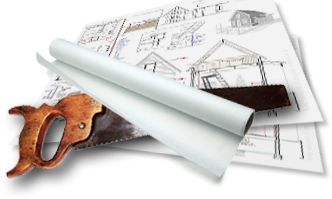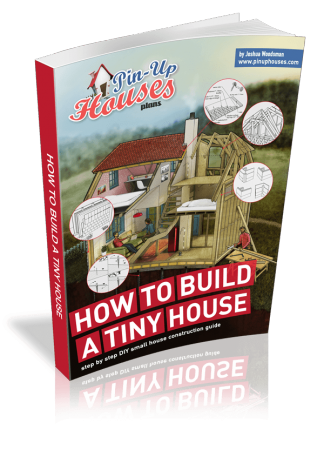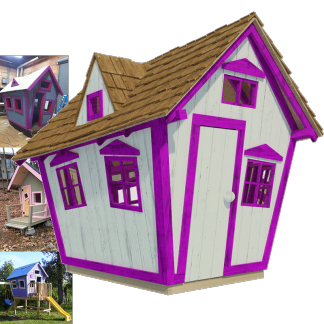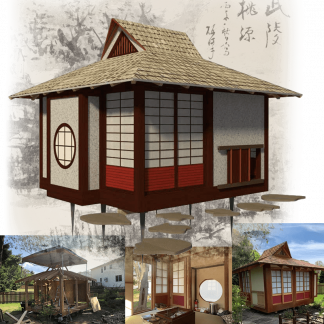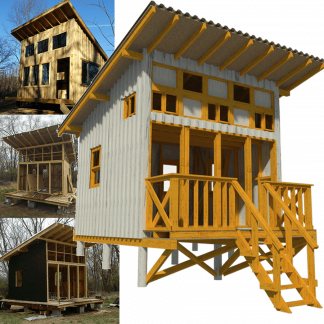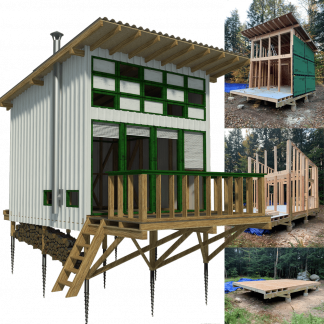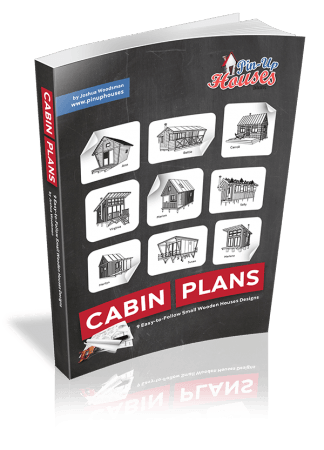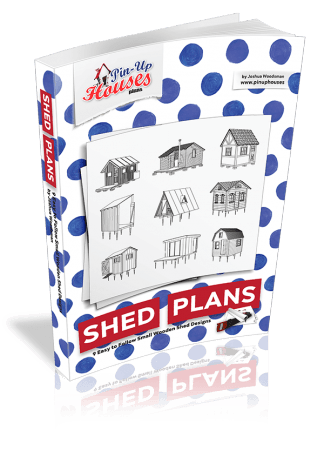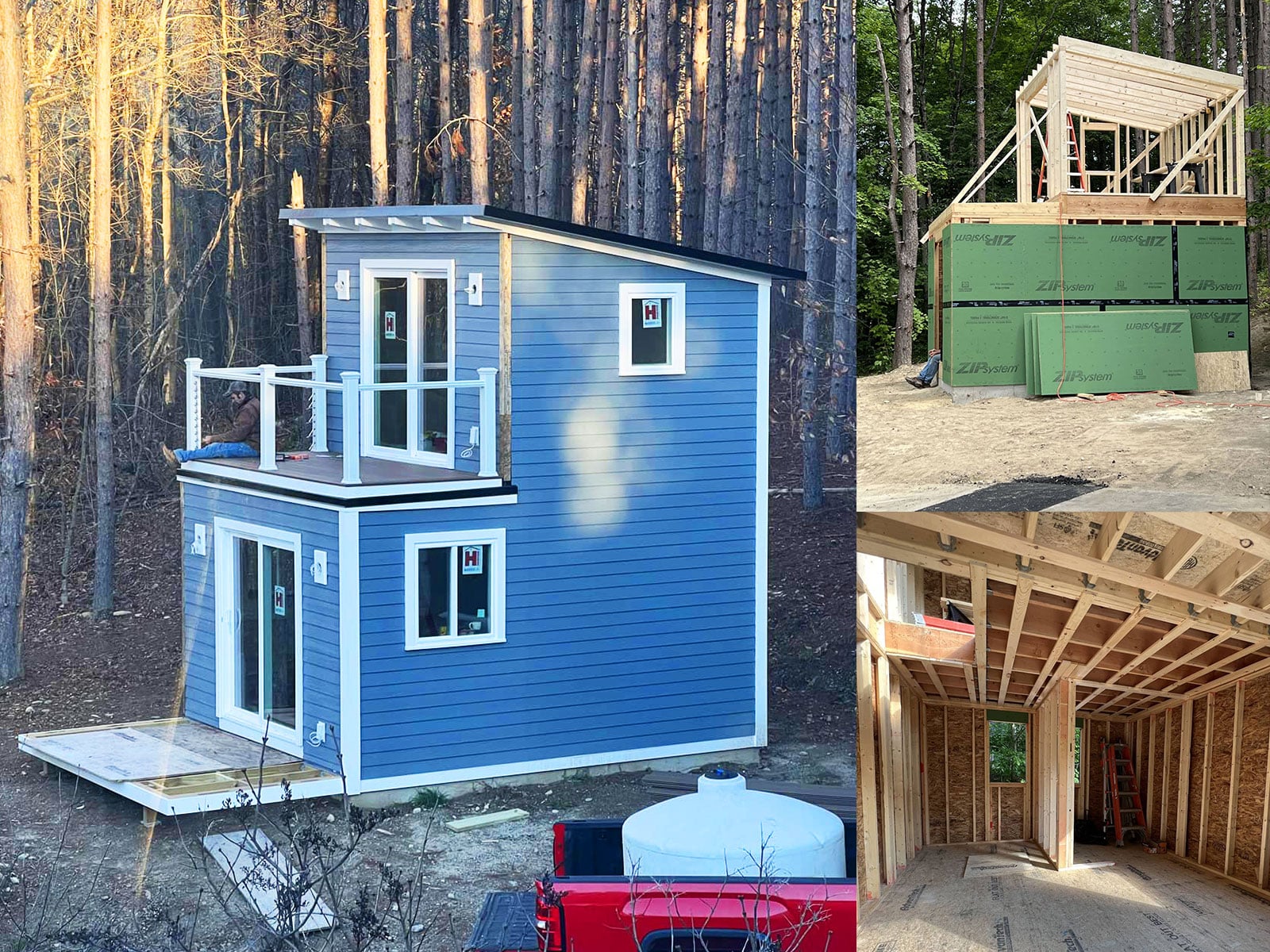
The house was a real joy to build.
Michael
We have recently received many beautiful photos of building a small cabin Yvonne. The Yvonne cabin is very similar to the Victoria cabin and differs only in the different dimensions of the floor plan. We are very grateful to be able to share them with you and also post an interview with the builder and owner Michael.
Where are you building your cabin?
We’re building the cabin on our property across from our main house as a guest house. We live on a rural property in Maine USA with lots of woods.
Which stage of the building process are you now at?
We’re almost finished by now. We still need the stairs inside and the kitchen countertop. The hardwood floors are hickory on both floors. We use a sliding door for the bathroom which gives more space because there is no door swing. The bathroom floor is porcelain tiles. We will have indirect LED lighting running along the ceiling. I can send you more pictures of the interior. We raised the back-end of the second floor to 6ft to have more headroom.








Have you been choosing between more of our designs?
We looked at the pin-up website and chose Yvonne because of the second floor being a full floor (like a separate room with more privacy) and not just a loft and because of the balcony sitting on top of the living room and not jutting out over one side of the house (which I think is not so pleasing on a small house.) The balcony in front has a very nice view over our park-like property with trees, a pond, and sculptures.
Have you been building it yourself (DIY) or with some professional help?
We have a professional carpenter building it.
With the help of modern tools, builders are constantly seeking ways to improve their efficiency. That’s why many have started integrating carpenter business software into their projects. This type of software not only creates accurate estimates and professional invoices but also helps streamline various processes making carpentry work more seamless.
How did you deal with the building permit restrictions?
I’m not sure what you mean by your question. We went to our town hall, showed them the plans, explained our ideas, and got a building permit. We needed to obey the setbacks and the limit of square footage for a secondary building but our lot is large enough to accommodate this building. Not getting a permit wouldn’t have been an option in Maine. This building needs a foundation. Once you need a foundation, you need a building permit. I understand that other countries might handle this question differently.
What did you use to cover the roof terrace to prevent water from leaking into the interior?
A rubber membrane. The decking is attached to the posts in such a way that it doesn’t pierce the membrane.
What is the significance of such a foundation concrete crawl space under the floor?
Building code requires a 4 ft frost wall in Maine. Since we already had that space under the house we decided to pour in concrete to have a floor and have a space for useful storage rather than having a dirt floor and getting issues with humidity etc. We also moved parts of the heat pump, the electric breaker panel, the plumbing, the electric water heater etc down below and didn’t need to take room for those things upstairs.


How do you plan to manage the heating?
We wanted a wood stove but decided against it because we didn’t want a flue pipe coming out on the front of the house. We decided against a pellet stove because of the noise of a fan. So we went with a heat pump that is very quest and clean. It will also allow for air-conditioning in the summer. Our main house has solar panels so electricity was a good solution for us. The interior part of the heat pump is immediately on the left when you enter the house. The box is very small and extends about 5 inches from the wall and covers about a square foot of wall space. It also blows the heat through the opening for the stairs up to the second floor. The exterior of the heat pump is behind the house. An additional advantage of a heat pump over a wood stove is that you have instant heat with a push of a button and don’t need to light a fire. You gain valuable floor space. But — sadly — you don’t have the pleasant and cozy display of a live fire.
Did you apply any of the sustainable living ideas in your cabin? e.g. reusing the rainwater
No we don’t. We have two wells on our property which we use. We used spray-in insulation with a high R-value which will be efficient for heating and cooling. And we use solar energy from the main house.
What was the most difficult part of the process and why?
The greatest challenge was the stairs. Because of the limited space and higher pitch we decided to use a design where the treads alternate. (Meaning treads are only half the breadth and alternate for the left and right foot.) That allows for a tread depth and height that is to code and still fits in that overall space.
What became the most challenging thing for you during the whole process?
Nothing really. The house was a real joy to build.
Any recommendations for new cabin builders who are just about to start their building journey or are deciding to buy our plans?
1. Raising the roof in back by 1.5 ft will give more headroom and makes the upstairs much more useable.
2. We used 2×4 for the walls (rather than 2×6) and went with spray-in insulation that gives the same R value of 19 as fiberglass in a 2×6 wall. But we gained 4 inches of room inside which makes a real difference in such a small house.
3. We used thin stainless steel wire for the railing upstairs which are quite elegant and also very unobtrusive. Much more transparent than a wooden banister and less maintenance than glass panels.
4. This is a small kitchen. To maximize the space we have open shelving rather than cabinets.
5. We have no stove but two cooktops.
6. We have a piece of countertop hanging down, attached to the countertop under the stairs, which can be raised like a drop-down leaf on a table. Enough table surface with two barstools for eating. That eliminates the need for a separate dining table in the living area. The living area has a couch, a chair, and a coffee table.
7. A pocket door for the bathroom eliminates the swing of the door and gives more floor space. 8. A space under the house allows for a breaker panel and water heater to go below. That makes for a bigger bathroom and makes it possible to use a normal sink and shower in the bathroom and gives more storage under the stairs.
Several people have asked us for the plans because they were really impressed with the look and design of that house. We referred them to your website. We couldn’t agree more. We think it’s a fabulous little house! 🙂
Thank you!!




























































